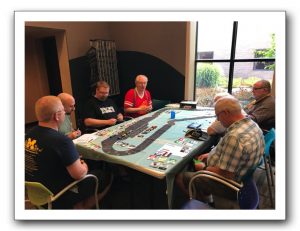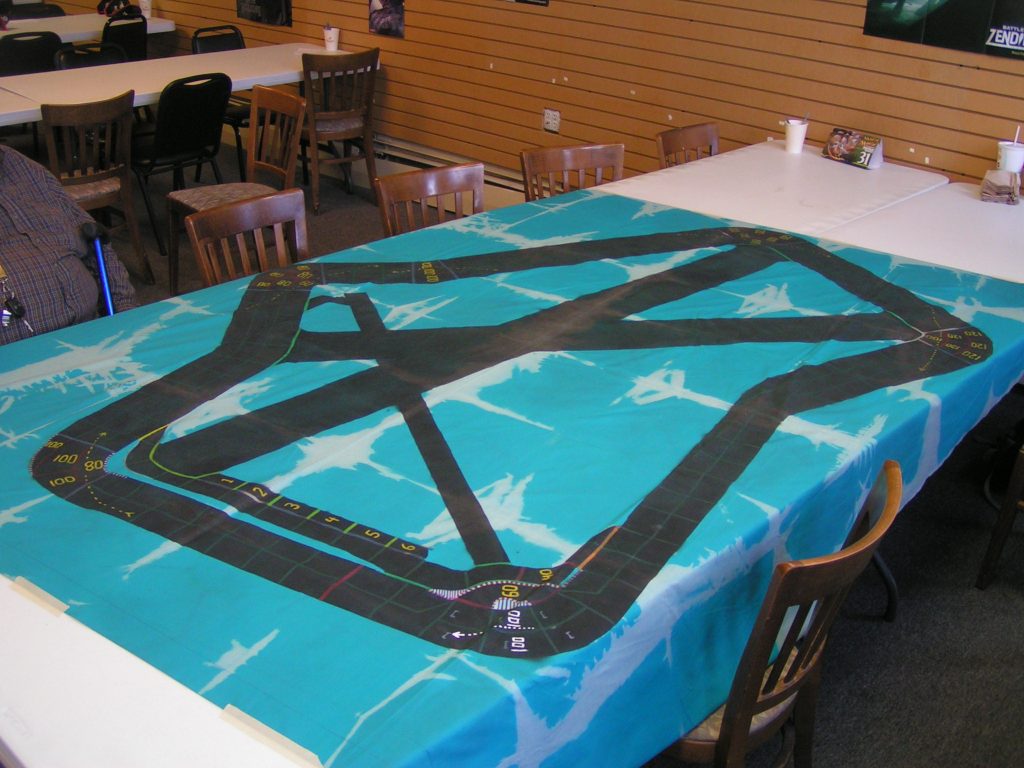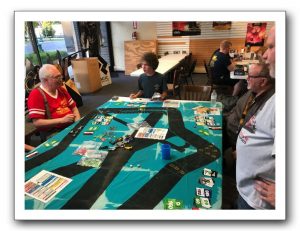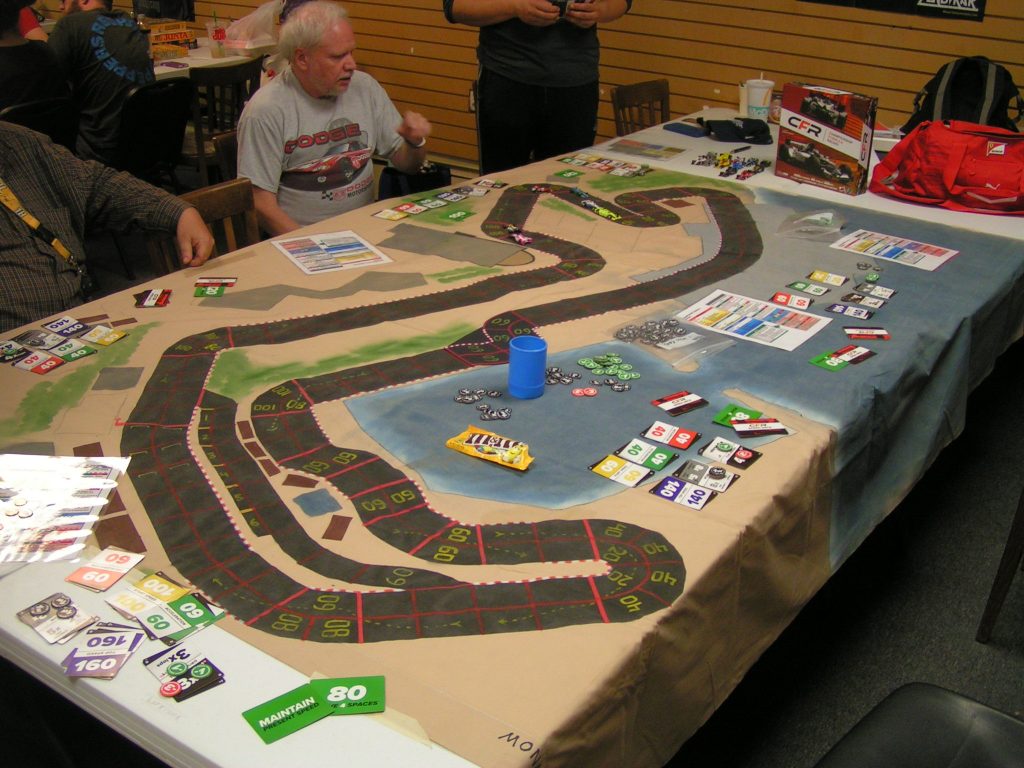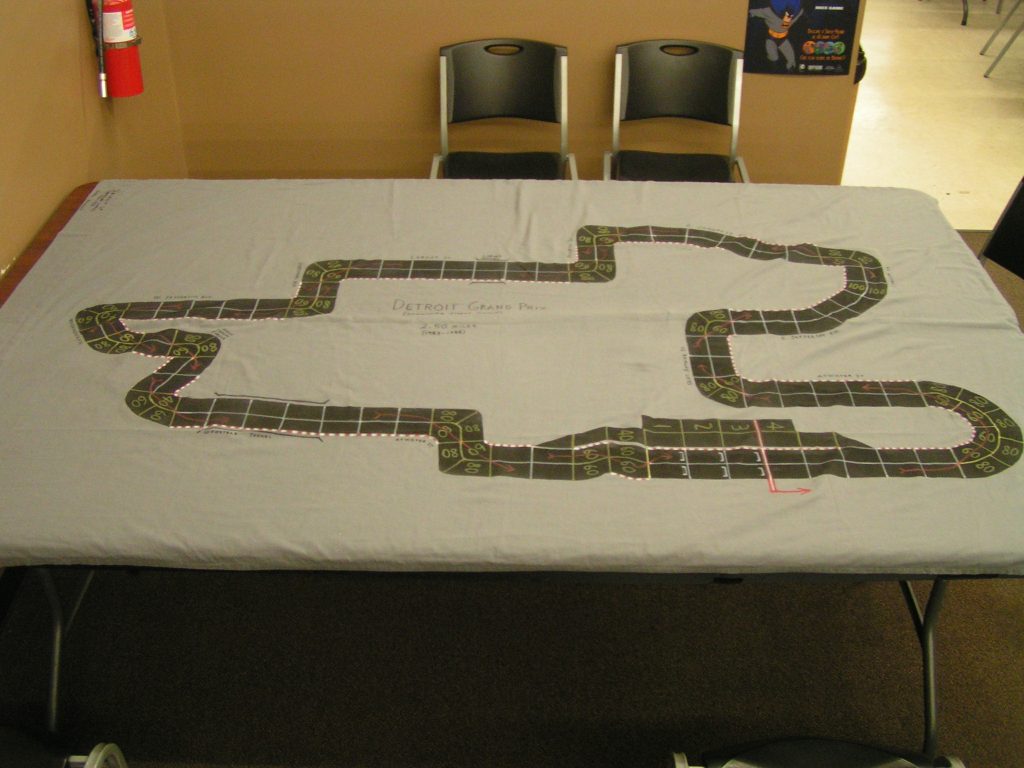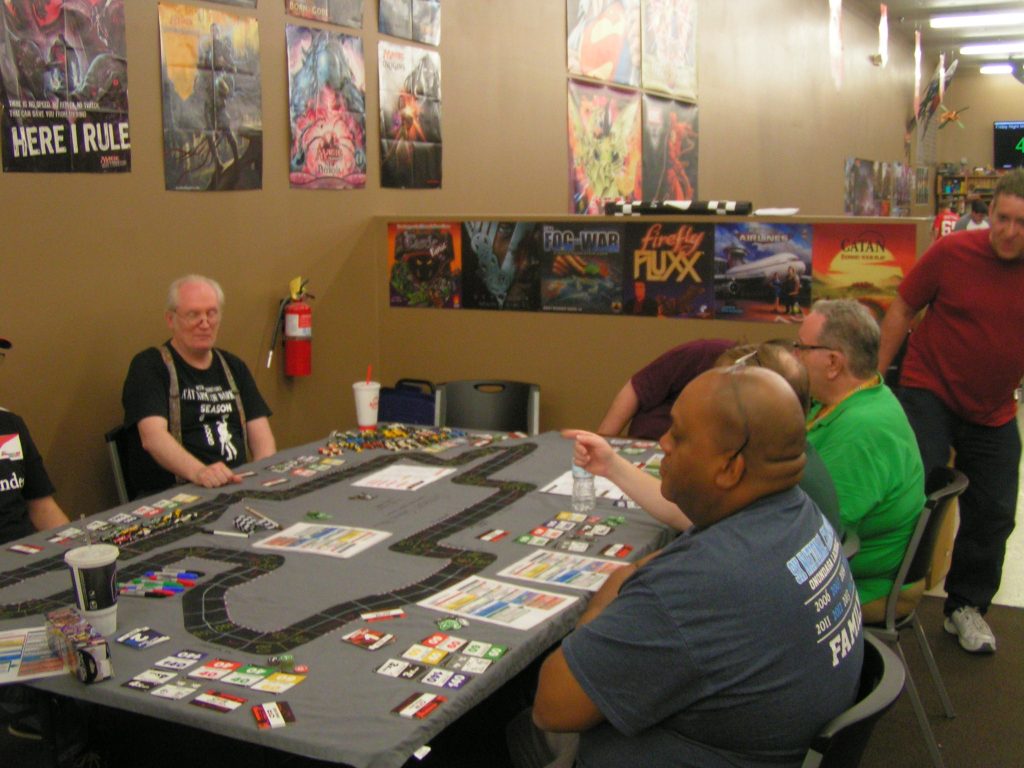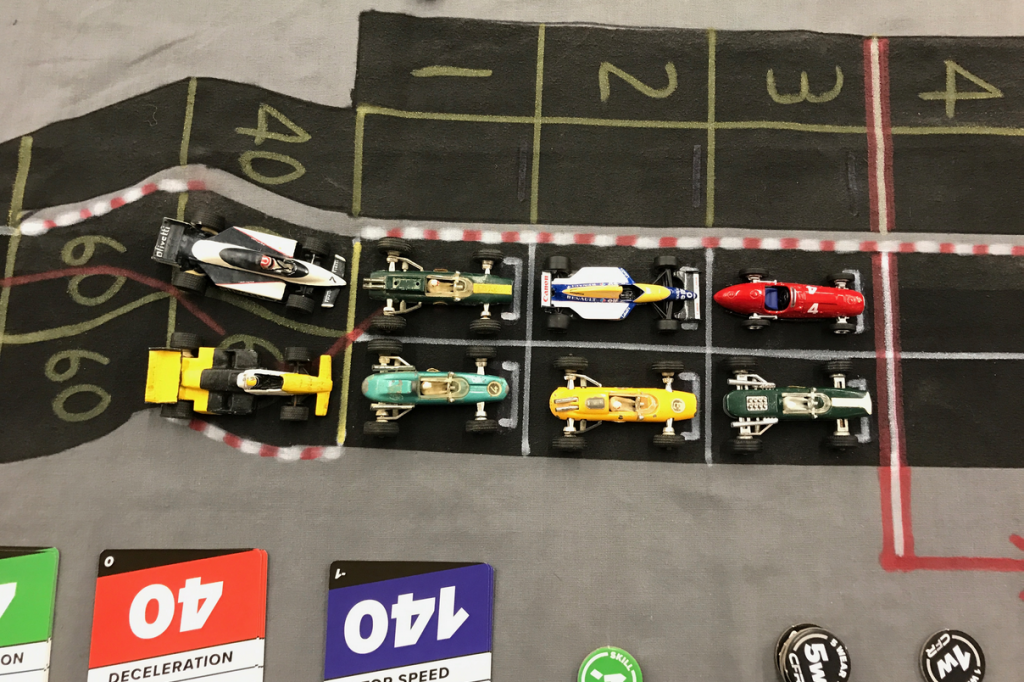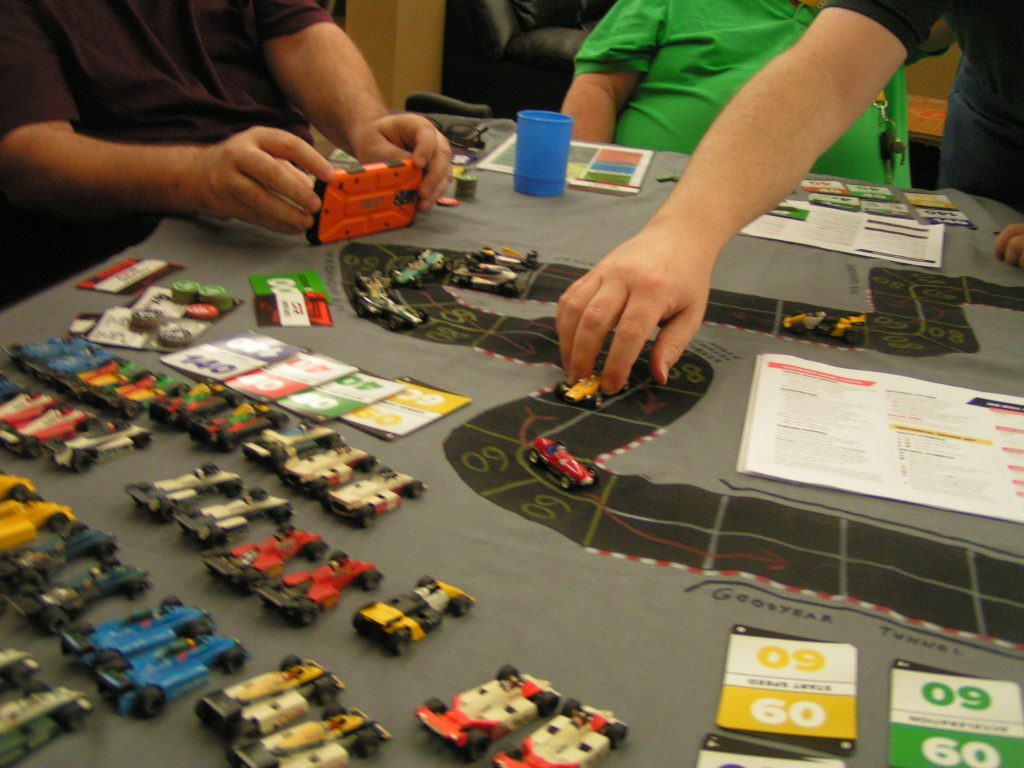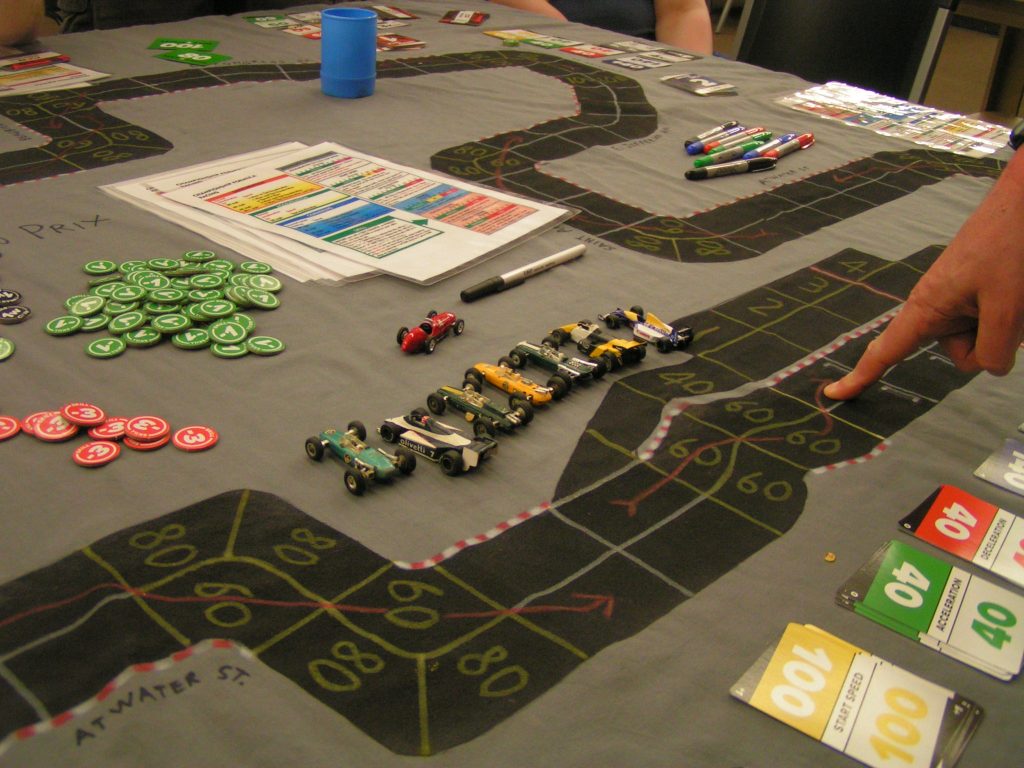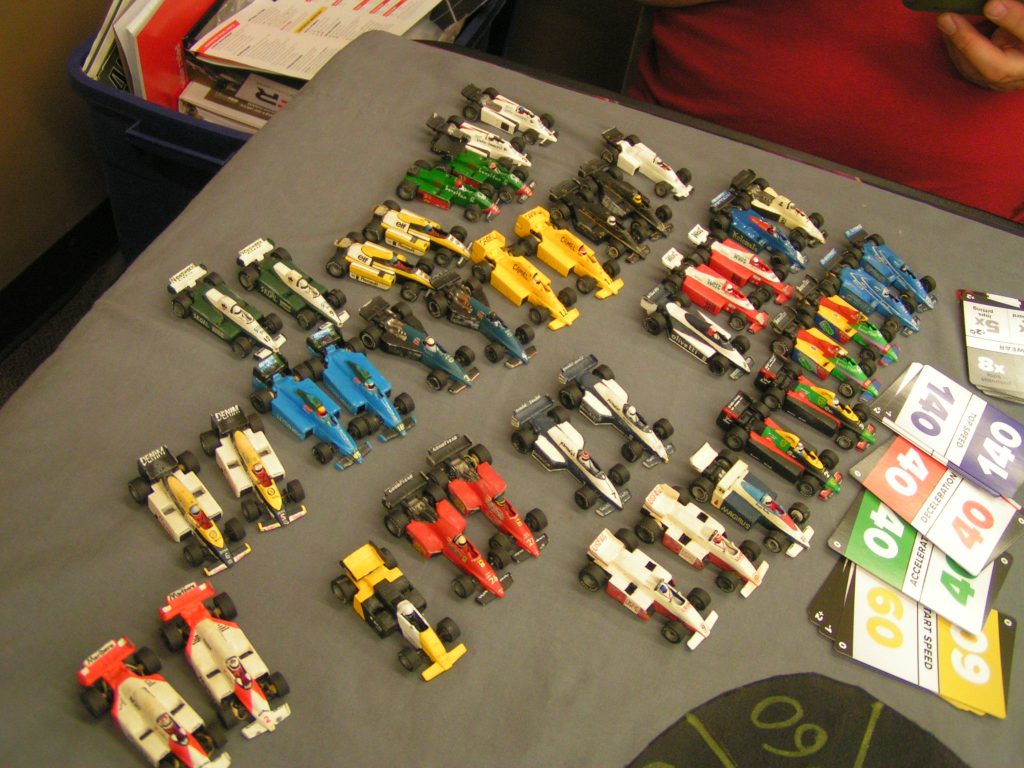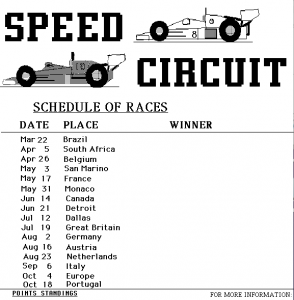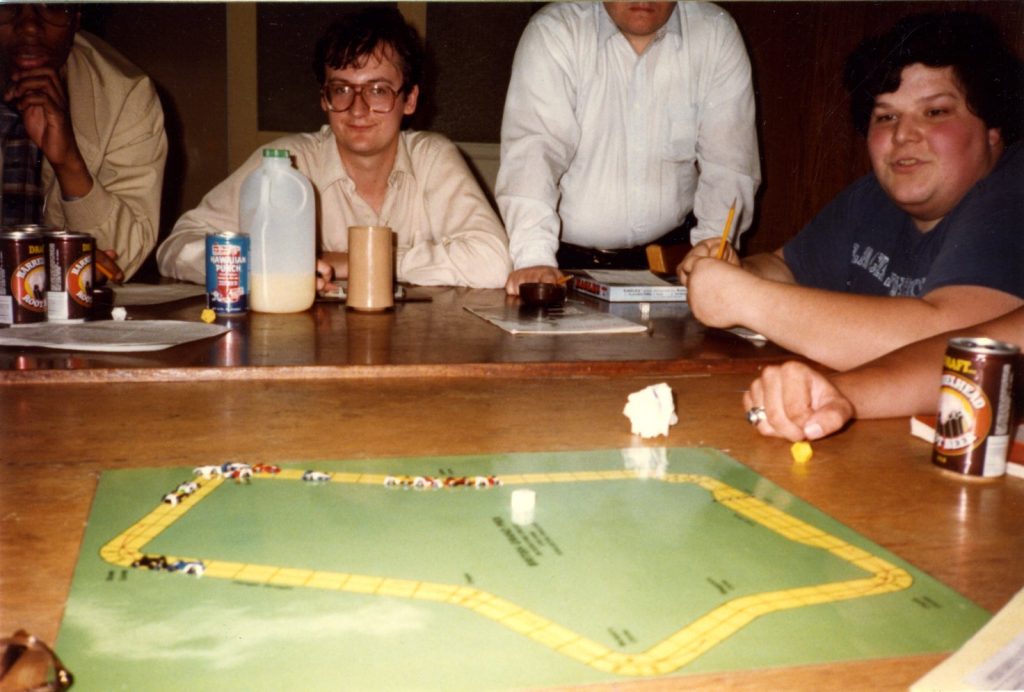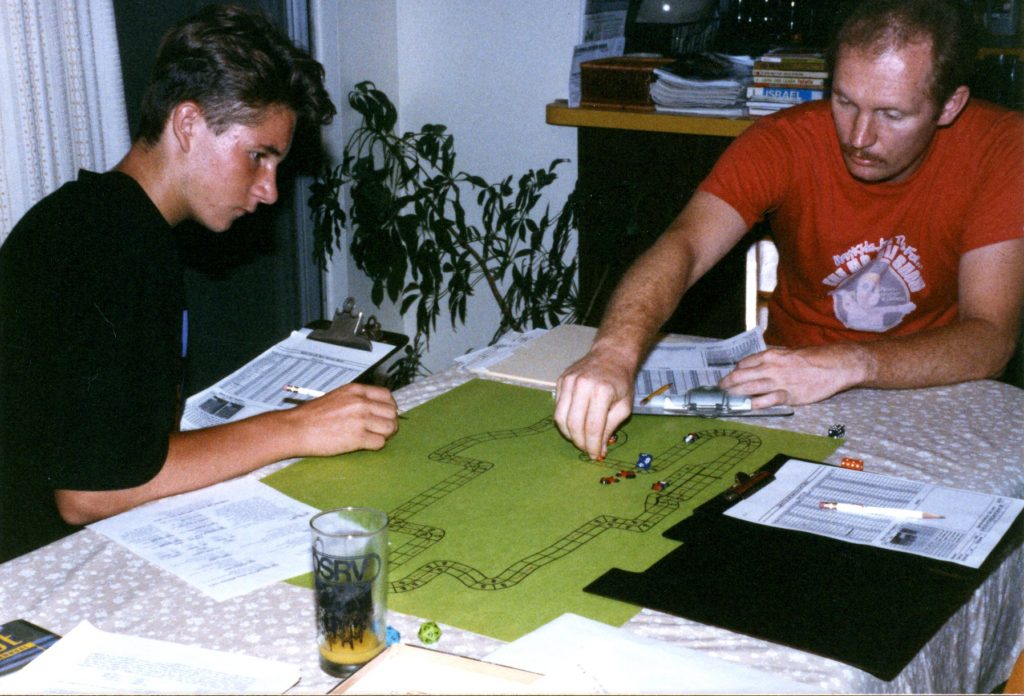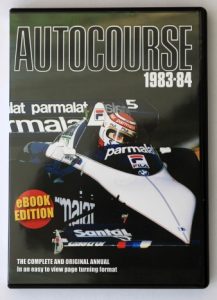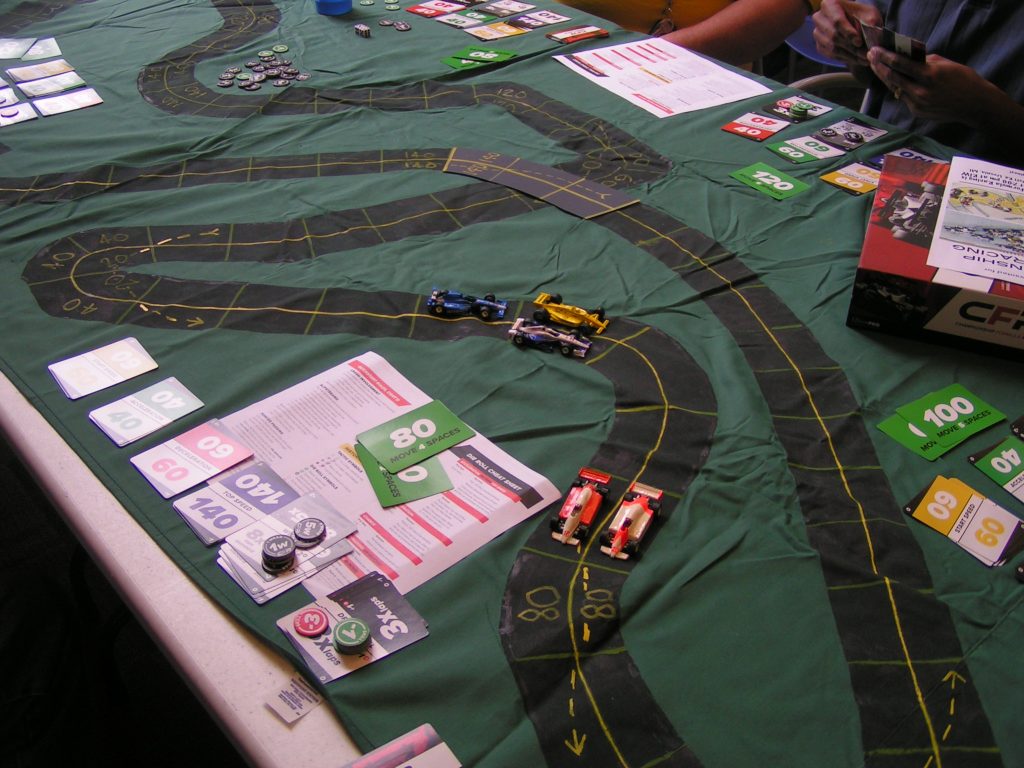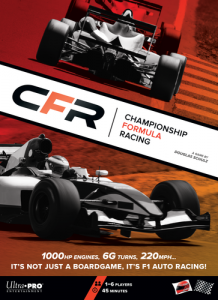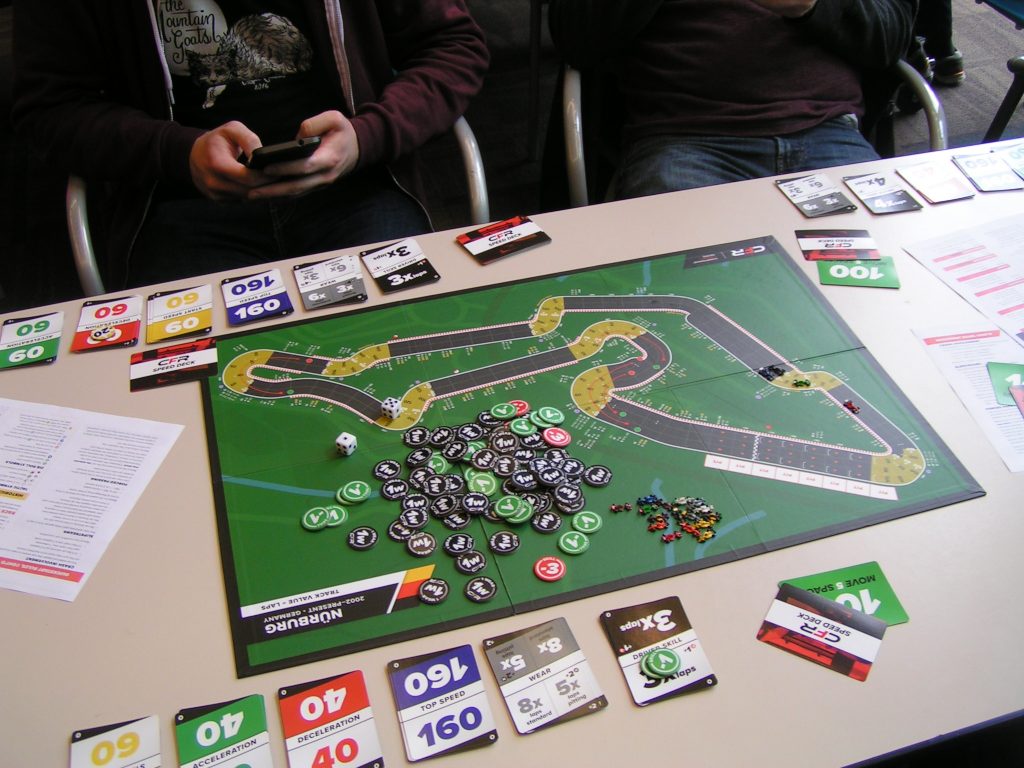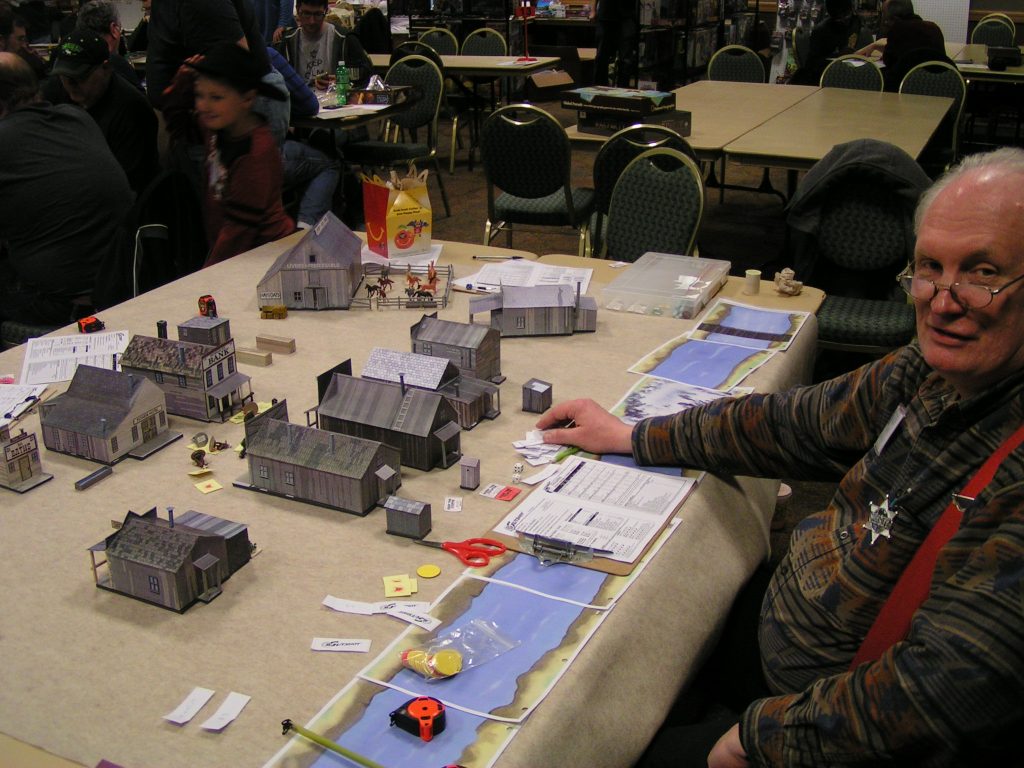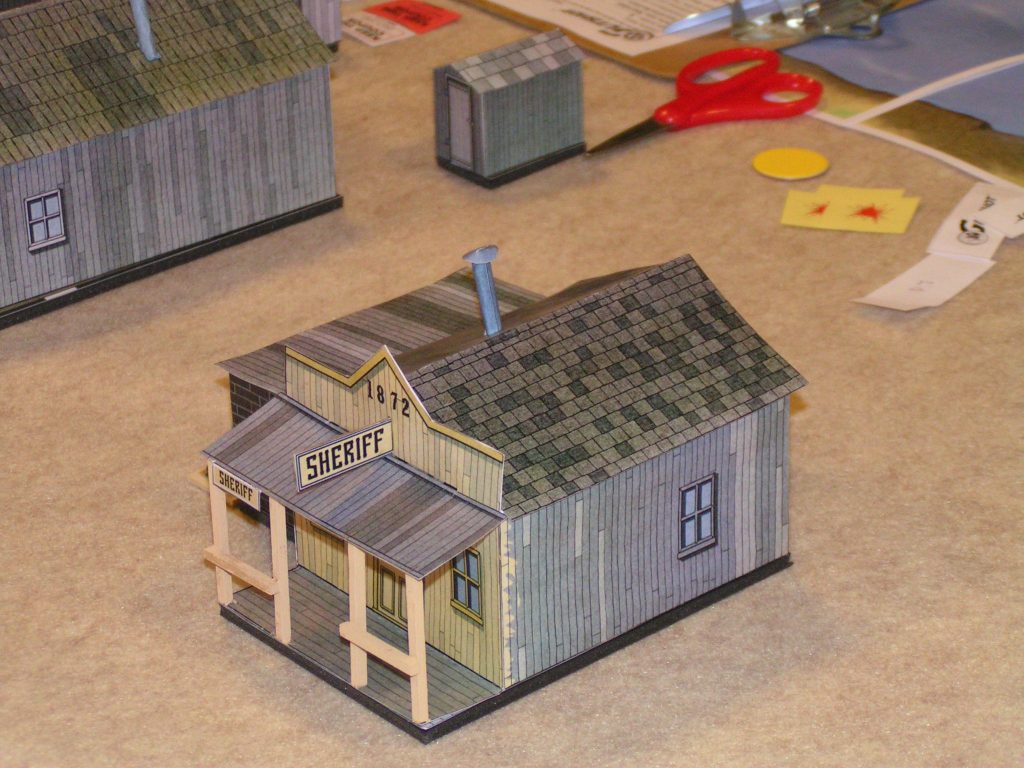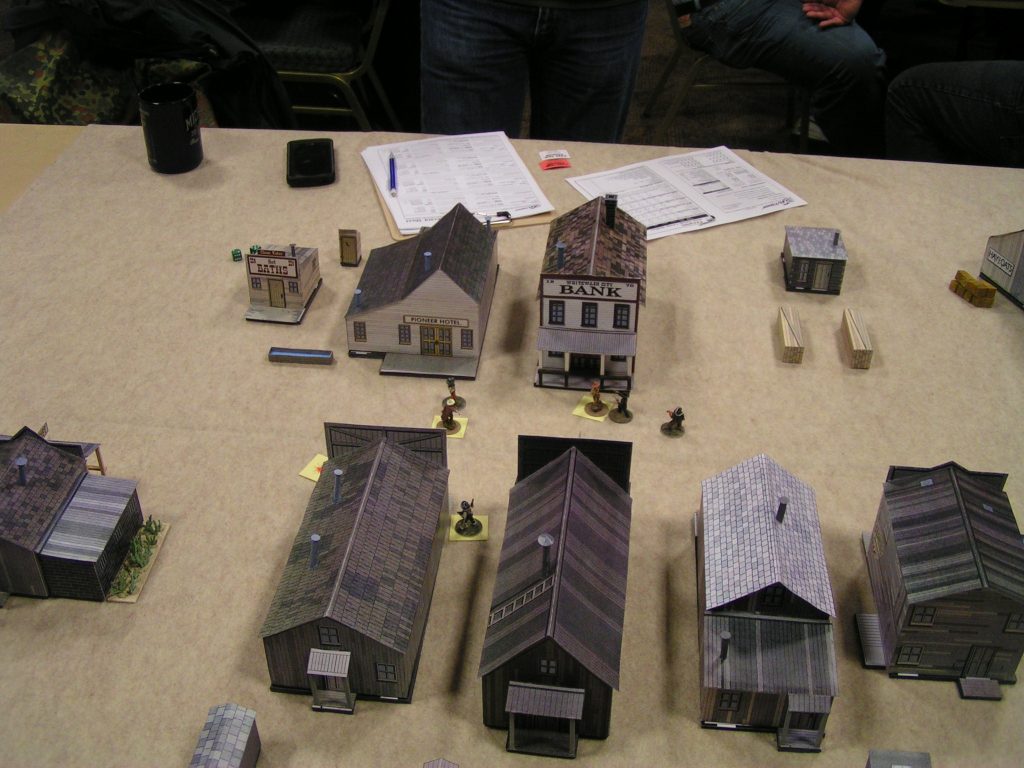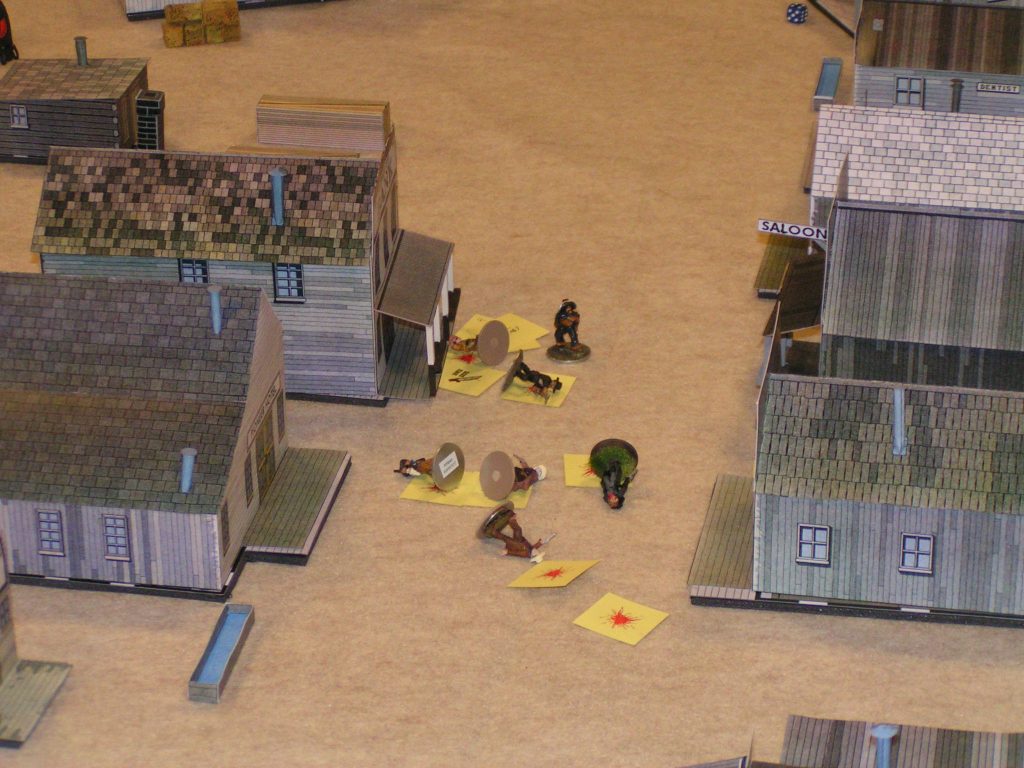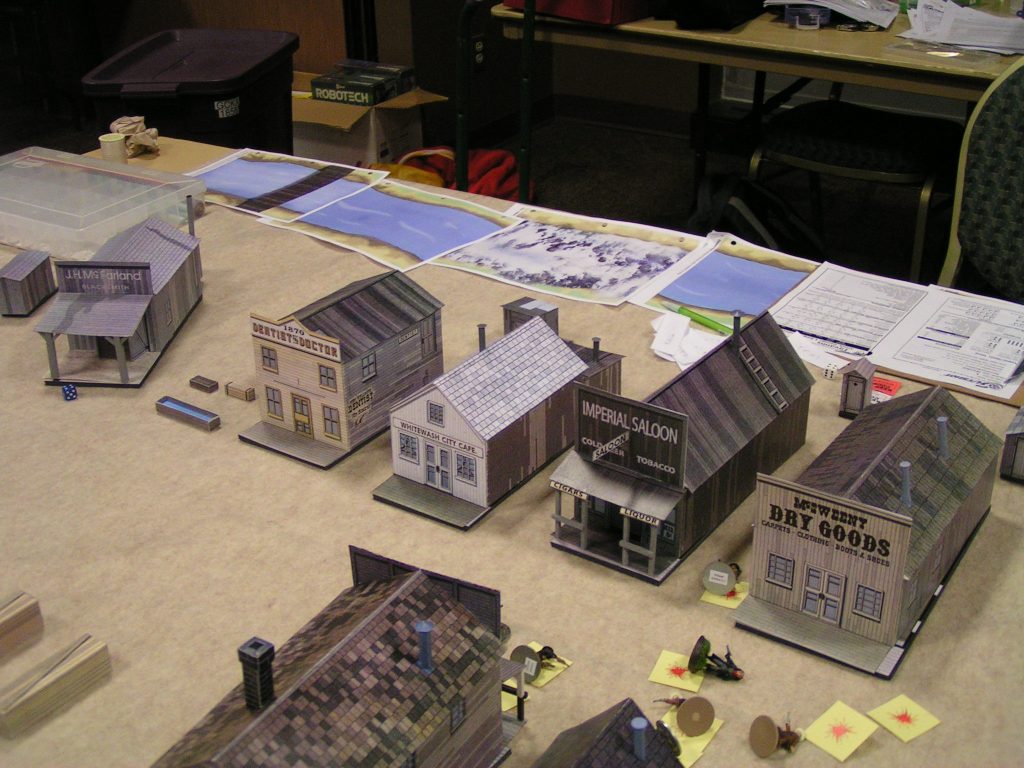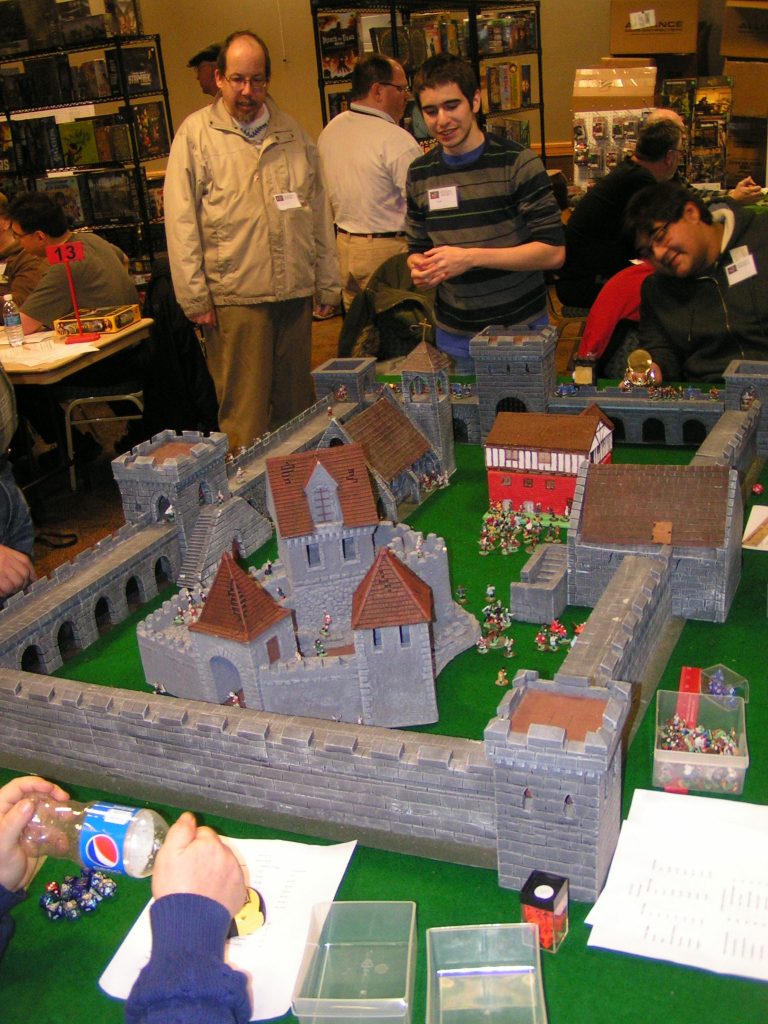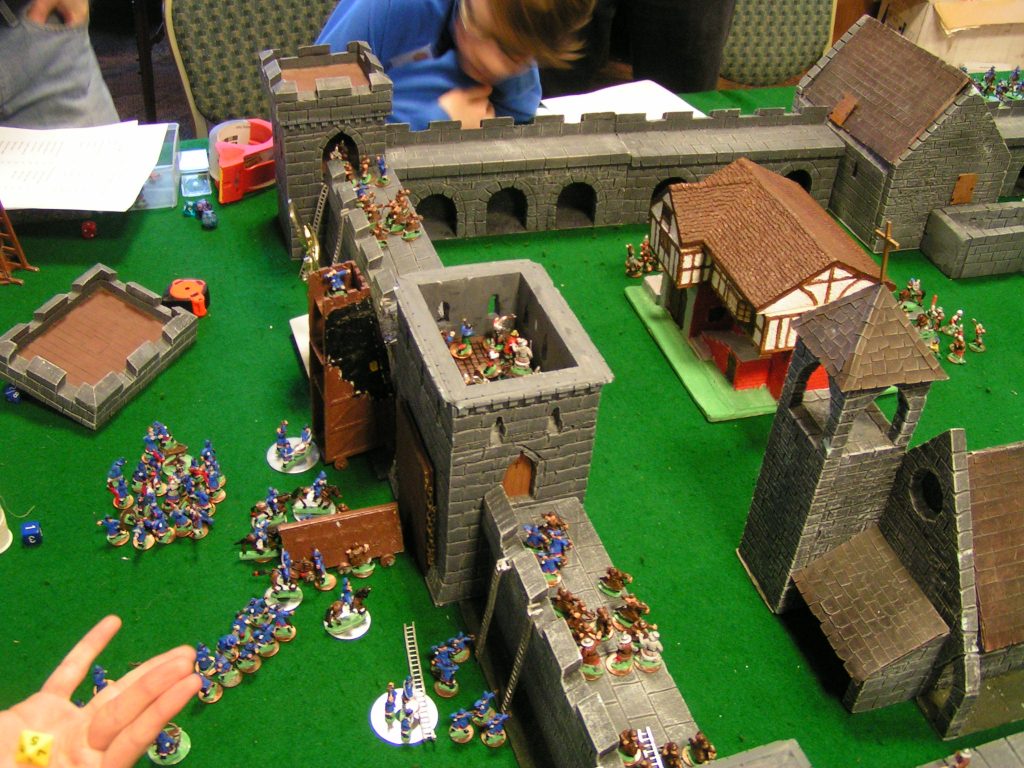On Saturday, July 1, 2017, I ran four more demo races of Championship Formula Racing, trying to attract more regular racers for our upcoming season of races (that should begin in September). I ran two races at the monthly first Saturday boardgame Meetup group at the Canton Public Library in Canton, Michigan, then later in the day I ran two more races at the Warriors 3 game store in Wayne, Michigan.
I got to the Canton library just before they opened the meeting room for us boardgamers at noon. Meeting me there were Greg Lim and Jim Robinson. We quickly set up four folding tables together so we could place one of our large scale race tracks on that group of tables. I had just borrowed four more large tracks from Richard White on Thursday, two nights previous.
For our first race, we had eight racers, and we raced on the Monza, Italy track. This large track is based on the mid-1980s Monza track from Avalon Hill’s Accessory Pack tracks from that era. It has not been modified for the newer Monza changes. But we all race on the same track, n’est-ce pas?
After we completed the first race at Monza, I asked folks if they wanted to race the 2nd race on a different track, but they wanted to race the Monza track again. One of the drivers from the first race dropped out, as he wanted to play some other board games at the library, but we added two other drivers, so the 2nd race had nine drivers. That was the most drivers we have had (so far) for our demo races.
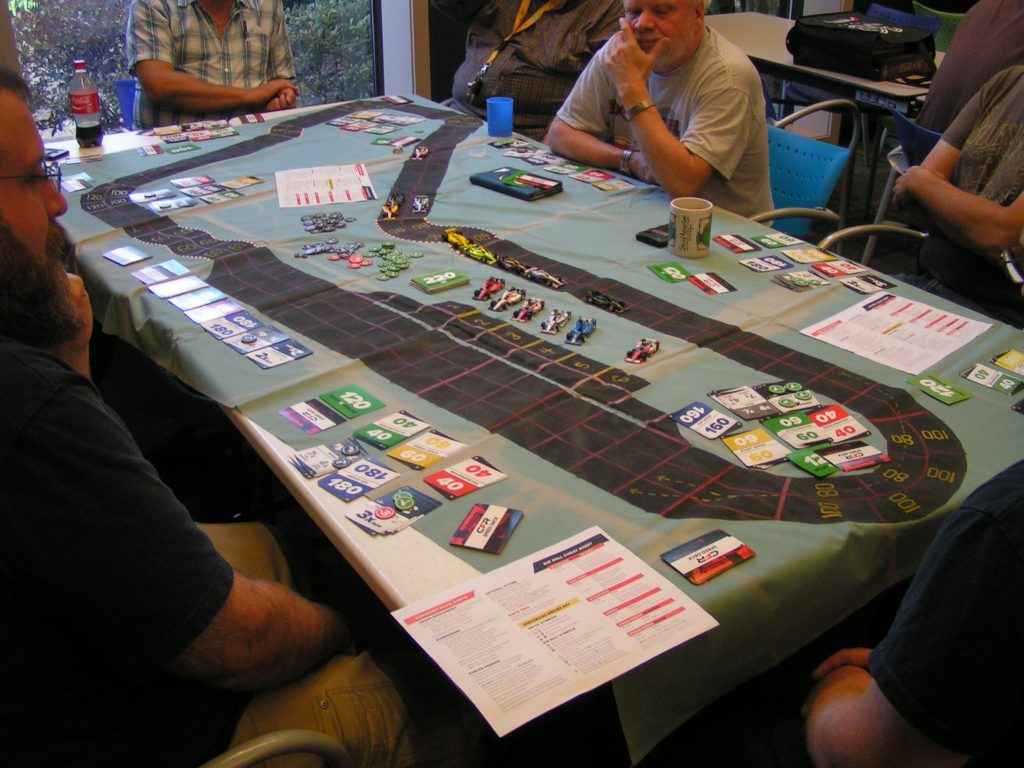
The last lap of the 2nd Monza race at the Canton library. Brian Robinson (center, in the gray t-shirt) comtemplates how he can win the race from his then 2nd place on the track.
Brian Robinson won that 2nd Monza race. Brian is relatively new to the Speed Circuit/Championship Formula Racing type games, but he is driving like an old pro. I told him at the end of the evening after the last race at Warriors 3 that I no longer considered him a rookie, but an “old pro” driver.
After that 2nd race at the Canton library, Greg and Jim and I went to a local fast food place for some dinner. (If you’re going to drive “fast” in racing games, you should eat “fast” food, eh?) Then we got to the Warriors 3 game store in Wayne, Michigan, in plenty of time to arrange four folding tables together to make room to set up another large track. I set up the Silverstone, England track.
While we were setting up the 1:64 scale race cars on the track while we were waiting for some other racers to arrive, a three-year old boy, Thomas, came over to our table. He was determined to play with our 1:64 scale cars! We first moved the cars from one side of the table to the other, but then Thomas tried to climb on top of the table to get to the cars. I was afraid of Thomas falling off the table and injuring himself. Finally, though, Thomas’ father called him away from us. The father was playing in a different game in a different area of the same large gaming room. Anyway, we were relieved, as our 1:64 scale cars are definitely not toys, and would not survive without damage from being handled by a three-year-old!
It should be noted that our race on the Silverstone track was also based on the mid-1980s configuration of that real-life track. In CFR game terms, I built my car to have 60 mph Acceleration and Deceleration, and a 180 mph Top Speed. You can pretty much drive either 120 mph or 180 mph every turn on this track configuration. Centered in the picture above is Ian, a young guy visiting the Detroit area from his home in Kentucky. Although he had never played CFR (nor Speed Circuit), he pretty quickly grasped the strategy to use. His downfall was taking too many early chances on cornering, and a spinout dropped him back in the race. If he wouldn’t have spun, though, he would have been a tough competitor.
After the Silverstone race was complete, we had time to race once more. We switched to the Monaco track for that last race of the evening. We had the same six drivers from the Silverstone race competing.
Ian took the early lead from the pole position, although I was hot on his heels from my front row position. The first time at the Casino/Station/Loews hairpin turn, I got the inside position from Ian, meaning I got to move first the next turn, so I took over the lead.
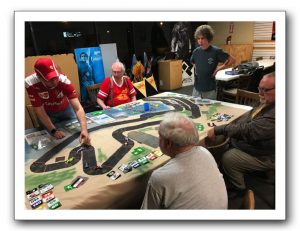
Jack stands to move the cars, while Garry tries to stay ahead of Brian’s car on the last lap at Monaco. (Greg Lim photo)
On the last lap, I had to hold back Brian’s car. With about a half-lap left to race, I had only 3 Wear remaining, while Brian had 7 Wear. At the finish line, Brian pulled alongside my car, but I nipped him by a nose at the end. Whew! I had to make two cornering Chance dice rolls late in the race, using my two -3 Skill chits.
Although the day was long, I believe everyone had fun racing in the different races. We added another six names to our CFR email list. We now have about 30 names on the list, but not all of them will race in our upcoming season. Some folks, such as Brian, have been using the frequent demo races to gain a lot of experience in racing CFR. When the season starts in September, I expect some close competition!
We will have another demo race on July 7, 2017, at Imperium Games in Wixom. Imperium Games used to be Flat Land Games, but they had a recent change of ownership. That demo race will start at 7:00 pm, and will be a 3-lap race. All of the demo races on July 1 were only 2-lap races, as they were intended to be used for teaching the game mechanics. Shorter races mean you can run more races in a day, plus if someone were to crash out of a race, they wouldn’t have to wait as long to get back into the next race. Surprisingly, though, every racer (including me!) finished every race, in spite of multiple chances being taken by rolling dice!
Check our CFR-Detroit web page for more info about upcoming Championship Formula Racing races in the Detroit, Michigan, metro area.
Posted by Garry
